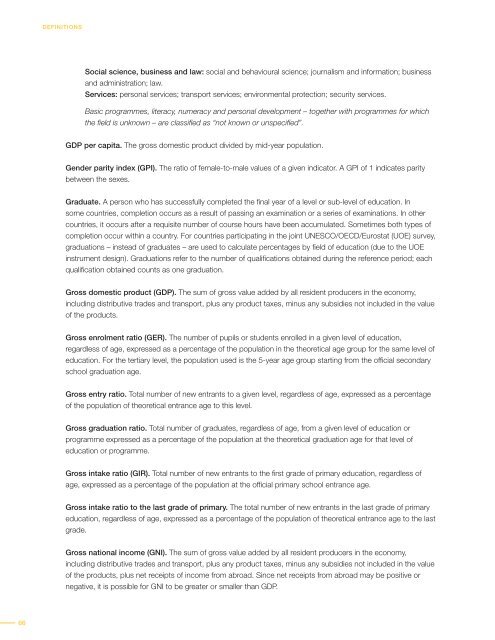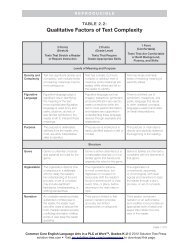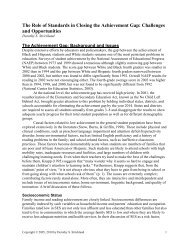Global Education Digest 2012 - International Reading Association
Global Education Digest 2012 - International Reading Association
Global Education Digest 2012 - International Reading Association
You also want an ePaper? Increase the reach of your titles
YUMPU automatically turns print PDFs into web optimized ePapers that Google loves.
DEFINITIONS<br />
Social science, business and law:.social and behavioural science; journalism and information; business<br />
and administration; law.<br />
Services:.personal services; transport services; environmental protection; security services.<br />
Basic programmes, literacy, numeracy and personal development – together with programmes for which<br />
the field is unknown – are classified as “not known or unspecified”.<br />
GDP per capita. The gross domestic product divided by mid-year population.<br />
Gender parity index (GPI). The ratio of female-to-male values of a given indicator. A GPI of 1 indicates parity<br />
between the sexes.<br />
Graduate. A person who has successfully completed the final year of a level or sub-level of education. In<br />
some countries, completion occurs as a result of passing an examination or a series of examinations. In other<br />
countries, it occurs after a requisite number of course hours have been accumulated. Sometimes both types of<br />
completion occur within a country. For countries participating in the joint UNESCO/OECD/Eurostat (UOE) survey,<br />
graduations – instead of graduates – are used to calculate percentages by field of education (due to the UOE<br />
instrument design). Graduations refer to the number of qualifications obtained during the reference period; each<br />
qualification obtained counts as one graduation.<br />
Gross domestic product (GDP). The sum of gross value added by all resident producers in the economy,<br />
including distributive trades and transport, plus any product taxes, minus any subsidies not included in the value<br />
of the products.<br />
Gross enrolment ratio (GER). The number of pupils or students enrolled in a given level of education,<br />
regardless of age, expressed as a percentage of the population in the theoretical age group for the same level of<br />
education. For the tertiary level, the population used is the 5-year age group starting from the official secondary<br />
school graduation age.<br />
Gross entry ratio. Total number of new entrants to a given level, regardless of age, expressed as a percentage<br />
of the population of theoretical entrance age to this level.<br />
Gross graduation ratio. Total number of graduates, regardless of age, from a given level of education or<br />
programme expressed as a percentage of the population at the theoretical graduation age for that level of<br />
education or programme.<br />
Gross intake ratio (GIR). Total number of new entrants to the first grade of primary education, regardless of<br />
age, expressed as a percentage of the population at the official primary school entrance age.<br />
Gross intake ratio to the last grade of primary. The total number of new entrants in the last grade of primary<br />
education, regardless of age, expressed as a percentage of the population of theoretical entrance age to the last<br />
grade.<br />
Gross national income (GNI). The sum of gross value added by all resident producers in the economy,<br />
including distributive trades and transport, plus any product taxes, minus any subsidies not included in the value<br />
of the products, plus net receipts of income from abroad. Since net receipts from abroad may be positive or<br />
negative, it is possible for GNI to be greater or smaller than GDP.<br />
66

















